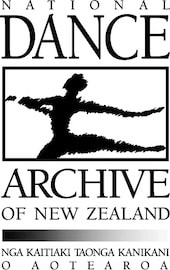What to Preserve. |
Most archival repositories and collecting institutions will be interested in material that is of research value, such as records of significant people and organisations, or material representing a particular style or period. Each archival institution’s collecting policy will determine the scope of what they will collect.
The following categories of dance-related information—both in physical, sound or digital formats—might be considered for preservation by an archival repository/collecting institution:
· administrative records of particular significance (not every day administrative material)
· correspondence related to dance
· personal papers and records of note
· contractual documents
· original manuscripts
· minutes
· attendance records
· seminar records including programme information, speakers in attendance, papers presented
· programmes and posters
· theatre set designs
· costumes designs
· works of art - drawings, sketches, paintings
· publicity records
· newspaper clippings
· photographs and negatives;
· visual recordings
· sound recordings
Items that are unlikely to be accepted by a collecting institution are everyday administrative records (such as receipts and bank statements), photographs and recordings of poor quality, or costumes and props. Unless you have earned an international reputation it is unlikely an archive will be interested your first pair of pointe shoes and tutu!
The following categories of dance-related information—both in physical, sound or digital formats—might be considered for preservation by an archival repository/collecting institution:
· administrative records of particular significance (not every day administrative material)
· correspondence related to dance
· personal papers and records of note
· contractual documents
· original manuscripts
· minutes
· attendance records
· seminar records including programme information, speakers in attendance, papers presented
· programmes and posters
· theatre set designs
· costumes designs
· works of art - drawings, sketches, paintings
· publicity records
· newspaper clippings
· photographs and negatives;
· visual recordings
· sound recordings
Items that are unlikely to be accepted by a collecting institution are everyday administrative records (such as receipts and bank statements), photographs and recordings of poor quality, or costumes and props. Unless you have earned an international reputation it is unlikely an archive will be interested your first pair of pointe shoes and tutu!

